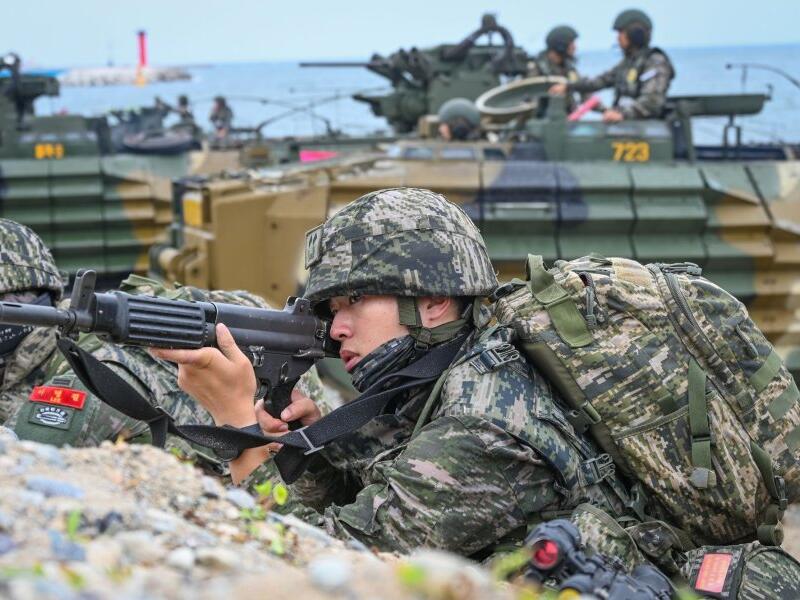Physical Address
304 North Cardinal St.
Dorchester Center, MA 02124
Physical Address
304 North Cardinal St.
Dorchester Center, MA 02124

POHANG, South Korea, Sept. 2 — In a significant show of strength, the United States and South Korea held large-scale amphibious assault drills on Monday, simulating a beach landing in the southeastern city of Pohang. This exercise showcased heavy machinery and a substantial number of troops, emphasizing the allies’ commitment to countering rising threats from North Korea.
The amphibious assault drills are part of the 13-day Ssangyong, or Double Dragon, landing exercise that began last week and will continue until Saturday.
During these operations, division-level landing forces were deployed using over 40 vessels, including South Korea’s powerful transport ships ROKS Dokdo and Marado, as well as the U.S. amphibious assault ship USS Boxer. The exercises featured the participation of more than 40 aircraft and numerous amphibious assault vehicles.
The U.S. Navy remarked that these displays of military capability highlight the overwhelming power of the alliance and its ability to conduct combined amphibious operations.
Media observers were treated to a live demonstration in which U.S. F-35B stealth jets and AH-1Z attack helicopters flew overhead. The session included a simulated bombing campaign along the coastline before waves of amphibious assault vehicles landed on the shores of Pohang, located approximately 170 miles south of Seoul.
As South Korean marines took their positions on the beach, paratroopers dropped from C-130 transport planes above. For the second consecutive year, a company-level unit of British commandos joined the exercise, while the drills were led for the first time by a combined staff of South Korean and U.S. officers.
“Conducting these combined joint forcible entry training exercises, including amphibious landings followed by subsequent operations, is essential because of their complexity,” stated U.S. Marine Corps Lt. Col. Gabriel Tiggs, executive officer of the 31st Marine Expeditionary Unit. He emphasized the importance of the U.S.-South Korean partnership in ensuring the defense of the Korean Peninsula.
Amid these drills, tensions on the Korean Peninsula remain elevated, primarily due to North Korea’s ongoing weapons tests and aggressive rhetoric. In a recent display, Pyongyang introduced new “suicide” attack drones and an enhanced multiple rocket launcher – capabilities that pose direct threats to targets such as Seoul, which is situated a mere 30 miles away from the North Korean border.
The ongoing Ssangyong drills follow closely on the heels of the 11-day Ulchi Freedom Shield joint exercises, which concluded just days earlier. North Korea routinely criticizes these collaborative military maneuvers, alleging that they are preparatory steps for an invasion. In response, North Korea argues that its nuclear program and other military advancements are essential deterrents to potential threats.
This joint military exercise highlights the united front between the United States and South Korea as they work to maintain stability in a region characterized by unpredictability and potential conflict. The continuous collaboration not only strengthens defense capabilities but also serves as a clear message to adversaries regarding the preparedness and resolve of the allied forces.
As global concerns about security on the Korean Peninsula persist, exercises like Ssangyong reinforce the commitment of both nations to uphold peace and security in the region through readiness and joint military operations.
Source: UPI



